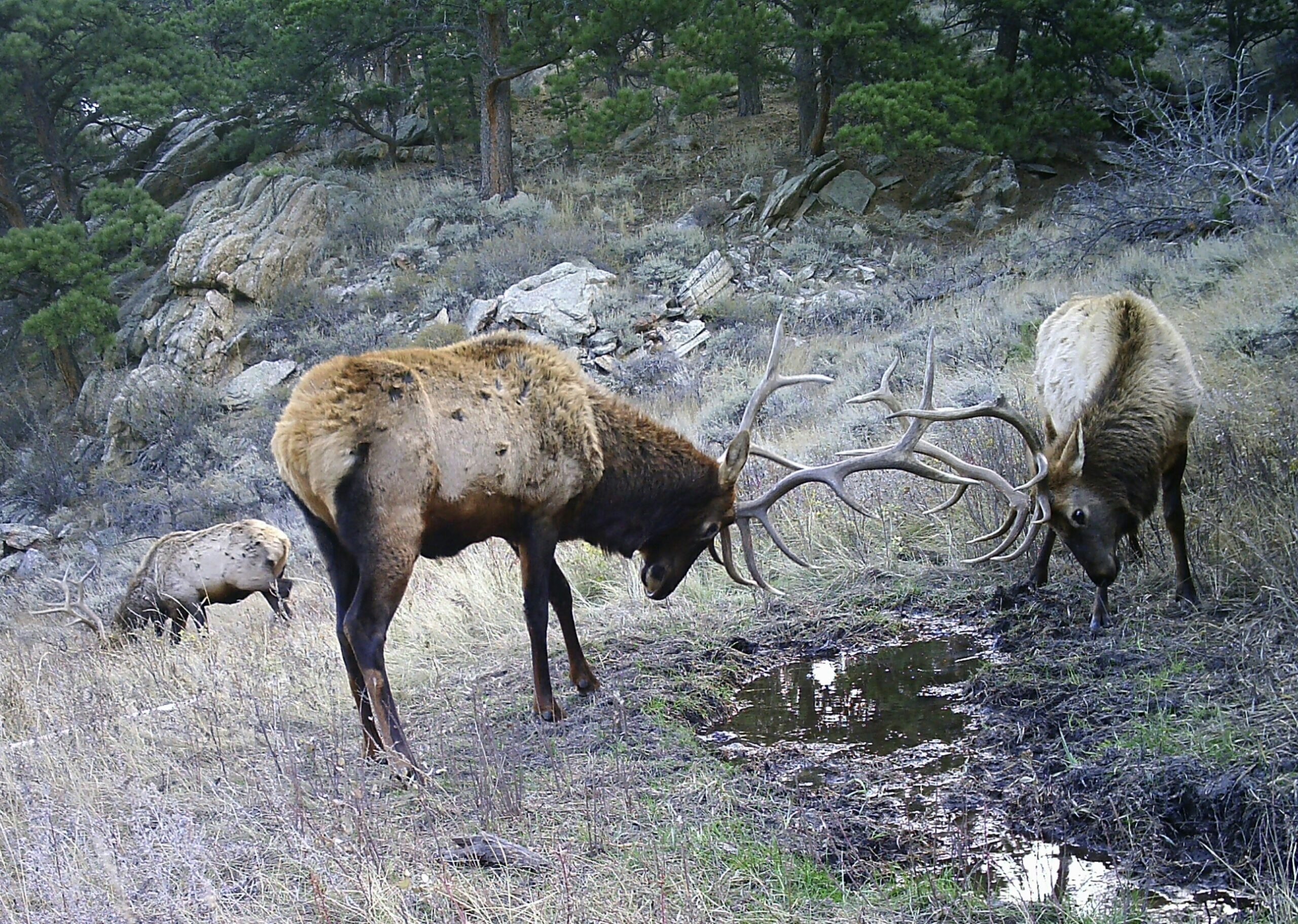A draft plan put forth by the Wyoming Game and Fish Department could stymie the spread of Chronic Wasting Disease (CWD) among the state’s deer, elk and moose populations.
“CWD has been documented spreading throughout the state, and there are areas where its prevalence is high enough that we think it could be having significant impacts on some of our herds,” said Justin Binfet, one of the plan’s authors and a Game and Fish Department wildlife management coordinator. “The plan is based on recommendations that were developed through an extensive collaborative process.”
Working with other state agencies, conservation groups and members of the public, Game and Fish created a “suite of strategies” for combatting the disease’s spread, Binfet explained.
Those strategies include wildlife feeding bans, potentially targeting mule deer bucks during breeding season, voluntary and mandatory submission of harvested animal samples and working with landowners, cities and counties to eliminate areas with unintentionally high concentrations of cervids, mammals of the deer family.
Incurable and spreading
CWD is a fatal disease affecting cervids’ central nervous systems and is caused by abnormal proteins called prions.
The disease is currently incurable and animals show no clinical signs of CWD during the early stages of the ailment, the plan stated. First documented in Wyoming about 30 years ago, CWD has spread to 84 percent of the 37 mule deer herds observed by Game and Fish while assembling its CWD plan. While the disease also affects elk, moose and white-tail deer, it is most prominent in Wyoming’s mule deer populations, the plan reported.
“Prevalence of this disease in chronically infected Wyoming deer herds has exceeded 40 percent, with one elk herd exhibiting nearly 15 percent prevalence,” said to the plan’s executive summary.
Muley Fanatic Foundation Co-founder Josh Coursey served as a member of the CWD Work Group assembled by Game and Fish to help create the plan.
“This is a very complex issue — there’s no silver bullet,” Coursey said. “It’s devastating to herds, and there’s no scientific data determining whether it’s transferable to humans.”
The Centers for Disease Control reported some studies have shown the disease can be transmitted to squirrel monkeys who were fed the muscle tissue or brain matter of CWD-infected deer and elk.
“If we know this can live in the environment, there’s not a commercial meat processor anywhere that has not been contaminated with CWD,” Coursey said. “There’s no doubt people are eating and have eaten CWD-infected meat.”
Diminished herds
Wyoming’s mule deer population is struggling, and CWD could be playing a major role, Hunting With Heroes Co-founder Colton Sasser said.
Hunting with Heroes takes disabled veterans hunting with licenses donated to the Game and Fish Department and has completed more than 1,000 hunts since 2013, but none of the animals harvested tested positive for CWD, Sasser said.
“A lot of people complain about the decreasing mule deer population in our state and boil it down to lack of predator control and hard winters,” Sasser said. “But I think CWD is a huge part of that.”
Coursey said several factors are affecting Wyoming’s mule deer populations, but CWD is high on the list.
“There’s no doubt there’s definitely an impact on CWD taking a toll on mule deer,” he said. “But, there isn’t just one issue that is going to solve declining herd counts.”
Options on the table
The Game and Fish Department’s CWD plan has hunters talking, Coursey said, and one of the hottest topics is the plan’s suggestion game managers could propose allowing hunters to harvest mule deer bucks during the rut, or breeding season.
“Late season hunting of mule deer bucks is not a common practice in the Cowboy State,” he said. “That’s when mule deer bucks are at their most vulnerable, and quite frankly, they’re silly.”
The rutting season is also when bucks make contact with numerous other mule deer, increasing the likelihood of contracting and spreading CWD, Coursey explained.
While the plan doesn’t give a Game and Fish game manager express permission to let hunters target mule deer bucks in the late season, Coursey said it does allow the game manager to propose late-season hunting as an option to his region for public feedback.
Still in the early stages of development, the CWD management plan could benefit Wyoming’s wildlife herds for decades to come.
“I think it’s going to take time for these management actions to be employed,” said Hank Edwards, a Game and Fish wildlife lab supervisor. “I don’t see them being employed right away, but they will start to be considered with the upcoming seasons next spring.”
Game and Fish spokesperson Janet Milek said the department will collect public comment on the plan until Jan. 15.
“At this point, a few comments have trickled in but they have not gone through the review process yet,” Milek said.
Residents can submit feedback online or by sending mail to the Wyoming Game and Fish Department, 3030 Energy Lane, Casper, Wyoming, 82604. Letters should be labeled ATTN: CWD Management Plan.





